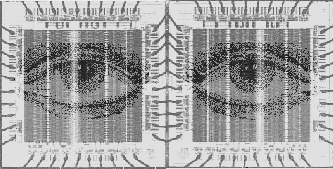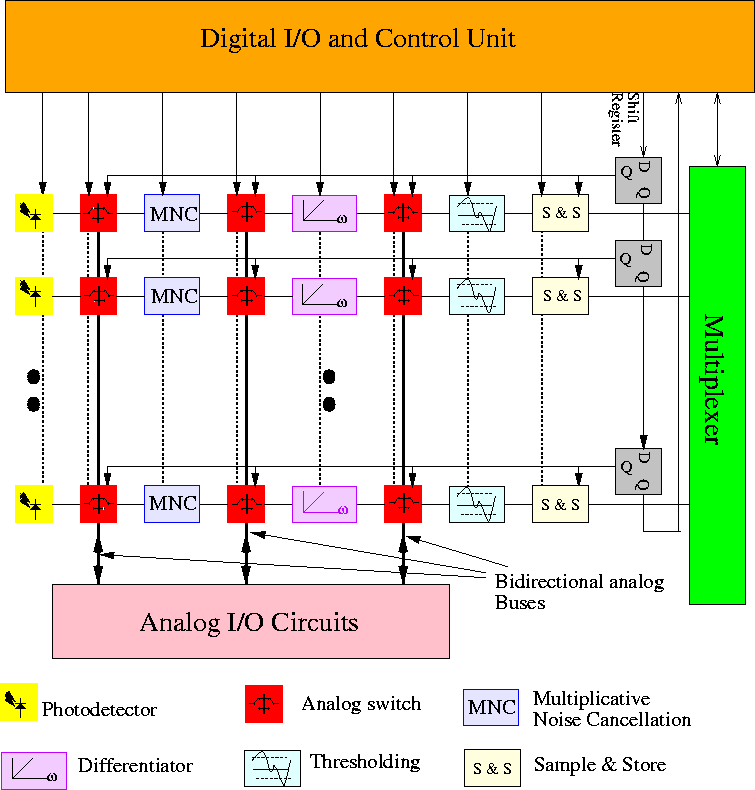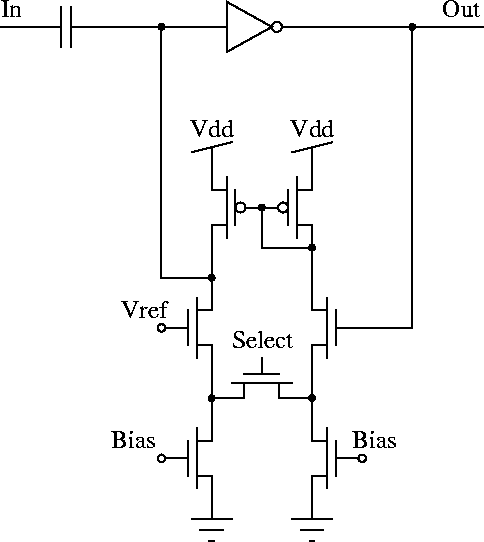

This second implementation of template model is architecturally similar to the first implementation described in section 3.10. This chip, however, has several special circuits built into it, in addition to more flexibility and testability features included. The chip architecture is shown in Figure 3.14. The chip has two 1-D arrays of 64 photoreceptors. The photodetectors are based on the multisensitivity photodetector and can be chosen from two different choices, a simple photodiode and a bipolar transistor (See section 7.2.1).
The next processing stage is multiplicative noise cancellation (MNC), where the signal in one channel is divided by the local spatial average. In addition to cancelling multiplicative noise from light sources reflected from the surface of objects, this operation performs an edge enhancement and normalization operation. The spatial averaging and division are realized using the circuits shown in Figure 3.15.
The final stage is the differentiation. The new differentiator uses a two-mode transconductance amplifier in its feedback loop. The OTA can be configured to either an Early effect mode or a simple five-transistor OTA. The circuit is shown in Figure 3.16.
The chip has been fabricated in a 1.2 ![]() m CMOS process in an area of
2.2mm
m CMOS process in an area of
2.2mm ![]() 2.2mm.
2.2mm.

Figure 3.14: The architecture of the second implementation of Moini et
al.'s insect vision based motion detection chip.

Figure 3.15: Schematic of the spatial averaging and division
circuits used in the MNC operation.

Figure 3.16: Schematic of Moini's differentiator with two different
operating modes.